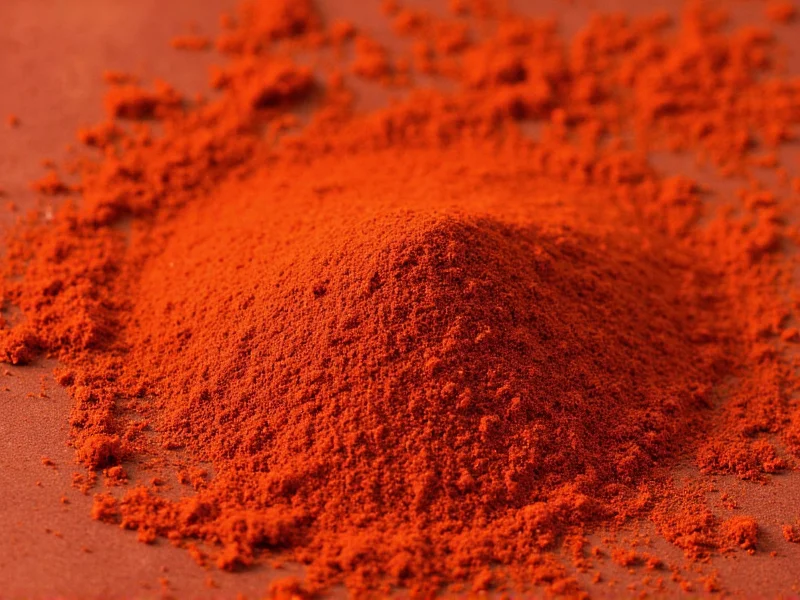When comparing cayenne pepper versus paprika, the most critical distinction lies in their heat intensity and flavor composition. Cayenne pepper, derived from specific hot chili varieties, consistently delivers significant spiciness that can dominate dishes. Paprika, however, encompasses a spectrum from sweet Hungarian varieties to spicy Spanish types, offering versatility without guaranteed heat. This fundamental difference explains why substituting one for the other requires careful consideration of your recipe's requirements.
Origins and Production Methods
Cayenne pepper comes exclusively from ripe cayenne chili peppers (Capsicum annuum var. grossum) that are dried and finely ground. The resulting powder maintains a consistent bright red color and intense heat due to high capsaicin concentration. Authentic cayenne contains no additives and typically measures between 30,000-50,000 Scoville Heat Units (SHU).
Paprika's production varies significantly by region and type. Hungarian sweet paprika uses mild bell peppers and wax peppers, while Spanish smoked paprika (pimentón) undergoes slow smoking over oak fires. Hot paprika varieties incorporate spicier pepper varieties. The grinding process for paprika preserves more of the pepper's natural oils, contributing to its characteristic aroma and color stability. This regional variation creates distinct paprika profiles that influence their culinary applications.
Heat Level Comparison
Understanding the heat differential between these spices prevents culinary mishaps. The Scoville scale measurements reveal substantial differences:
| Spice Type | Scoville Heat Units | Heat Perception |
|---|---|---|
| Cayenne Pepper | 30,000-50,000 SHU | Intense, immediate burn |
| Sweet Paprika | 0-500 SHU | No heat, pure color |
| Smoked Paprika | 500-2,500 SHU | Mild warmth |
| Hot Paprika | 5,000-15,000 SHU | Moderate heat |
When substituting cayenne pepper for paprika, use only 1/8 to 1/4 teaspoon of cayenne for every tablespoon of paprika to avoid overwhelming heat. The reverse substitution requires careful consideration of the paprika variety's heat level.
Culinary Applications and Substitution Guidelines
Cayenne pepper excels in recipes requiring pronounced heat without altering color balance. It's essential in Cajun/Creole cooking, hot sauces, and spice rubs where intense heat is desired. The sharp, clean burn of cayenne works well in tomato-based dishes, soups, and stews where its heat distributes evenly.
Paprika serves dual purposes depending on variety. Sweet paprika provides vibrant color without heat in deviled eggs, potato salads, and Hungarian goulash. Smoked paprika adds complex, woodsy notes to paella, roasted vegetables, and barbecue rubs. Hot paprika offers moderate heat with distinctive flavor in chorizo and certain Middle Eastern dishes.
Successful substitution requires understanding your recipe's needs:
- Replace sweet paprika with cayenne only when heat is acceptable (use 1/8 tsp cayenne per 1 tbsp paprika)
- Substitute smoked paprika for cayenne only in recipes where smokiness complements other ingredients
- Use hot paprika as partial cayenne substitute in dishes requiring moderate heat (1:1 ratio for mild heat)
- Never substitute sweet paprika for cayenne when heat is essential to the dish
Nutritional Profiles and Health Considerations
Both spices contain beneficial compounds but in different concentrations. Cayenne's high capsaicin content (0.1-1.0%) provides documented metabolic benefits and pain relief properties. Research shows capsaicin may boost metabolism by 4-5% and reduce appetite. However, excessive cayenne consumption can cause gastrointestinal distress in sensitive individuals.
Paprika contains higher concentrations of carotenoids like capsanthin and beta-carotene, providing antioxidant benefits and contributing to its vibrant color. Sweet paprika offers vitamin A benefits without significant heat. Smoked paprika contains polycyclic aromatic hydrocarbons (PAHs) from the smoking process, which should be consumed in moderation.
When incorporating these spices into dietary plans, consider individual tolerance levels. Those with acid reflux or ulcers should limit cayenne consumption, while paprika generally presents fewer digestive concerns except in hot varieties.
Purchasing and Storage Recommendations
For optimal flavor and potency, purchase whole dried peppers and grind them yourself when possible. Store-bought powders should be checked for freshness by aroma—fresh cayenne has a sharp, penetrating scent while fresh paprika smells sweet and earthy. Avoid products with clumping or faded color, which indicate age or moisture exposure.
Proper storage maintains potency:
- Keep both spices in airtight containers away from light and heat
- Refrigeration extends shelf life to 1-2 years (vs 6-12 months at room temperature)
- Check color regularly—fading indicates diminished potency
- Smell test: diminished aroma means reduced flavor impact
When comparing cayenne pepper brands, look for single-ingredient listings without fillers. Quality paprika should specify its origin (Hungarian, Spanish, etc.) and type (sweet, smoked, hot). The finest paprika displays a deep, uniform red color without brown specks.
Practical Cooking Applications
Understanding when to use cayenne pepper instead of paprika transforms cooking results. Cayenne works best when:
- Adding heat without altering dish color
- Creating spice rubs for meats requiring intense heat
- Boosting heat in tomato-based sauces without adding smokiness
- Preparing dishes where clean, sharp heat is preferred over complex flavors
Paprika shines when:
- Adding vibrant red color without significant heat (sweet paprika)
- Creating complex flavor profiles with smoky notes (smoked paprika)
- Preparing traditional dishes like Hungarian goulash or Spanish paella
- Seasoning dishes where moderate heat with distinctive pepper flavor is desired
Professional chefs often use both spices in layered approaches—paprika for base flavor and color, with cayenne added for precise heat adjustment. This technique provides dimensional flavor without overwhelming any single element.











 浙公网安备
33010002000092号
浙公网安备
33010002000092号 浙B2-20120091-4
浙B2-20120091-4